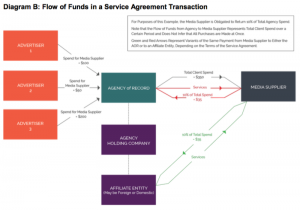One Door’s Ken Kuperstein offers tips on determining when creative is a hit or a miss.
When cloud-based visual merchandise software company One Door teamed up with marketing platform Influ2 to reach B2B customers, they used performance data to improve their current and future campaigns. This was especially necessary in a B2B effort with many targets that sat within a single account, and with different actions for prospects to take, including content downloads and requests for demos.
One Door provides engagement solutions for retailers, including Best Buy and T-Mobile.
Let data lead the way
“As our campaign progressed, we found that downloads and demo requests were trailing off, and we think it was because the creative concept wasn’t broadly understood by our target audience,” said Ken Kuperstein, One Door’s Director of Marketing, at our recent MarTech conference. “This highlighted to us the importance of balance and creative execution with ads that are not so awkward, and more driven.”
According to Kuperstein, it’s best not to overthink the concept behind the content in your campaigns. Keep in mind the experience of the customer who is viewing an ad or visual asset.
“The person who’s viewing the ad only has two seconds to look at it, that’s it,” he said. “And so either they get it or they don’t.”
Marketers who created the campaign have spent more time engaging with the message of the campaign, and the point of the message might not be so evident for prospects viewing it quickly for the first time.
Guiding the customer with actions
Once you think you have a sticky piece of content that will attract the right viewers, continue to visualize where they will go next with appropriate clicks and other actions.
“You know some things kind of pull them in and make them click to the landing page, and if your page is set up right, then you will effectively guide them to a desired action, be it a download or a demo request,” Kuperstein explained.
“The harsh reality for all of us is that everyone is not in the market for your product at the same time,” he added. “And when you decide to advertise it, you know when someone isn’t clicking on it.”
Maintaining a fresh rotation
Keeping an eye on the data will let marketers know when something should be tweaked or refreshed throughout the run of a campaign.
“Creative has to be rotated more frequently, and one way that we do that is we use the dashboard to look at the impressions,” said Kuperstein.
“So if someone is served up 100 impressions and they haven’t clicked an ad, I don’t think impression 101 is going to do it for you,” he said. “[That signals] that we need to change that message and try to understand what’s happening.”
He added, “In other instances, we see someone served up three impressions and they clicked an ad and they were hanging out in the landing page and they downloaded something. To me that’s better than any sort of intent signal.”
In keeping a close eye on engagement and other data, marketers will get to know their audience better in the long run, and optimize their creative strategy in reaching B2B customers.
Watch the full presentation from the MarTech conference here (free registration required).
The post Using data to optimize campaign creative appeared first on MarTech.
MarTech(34)









